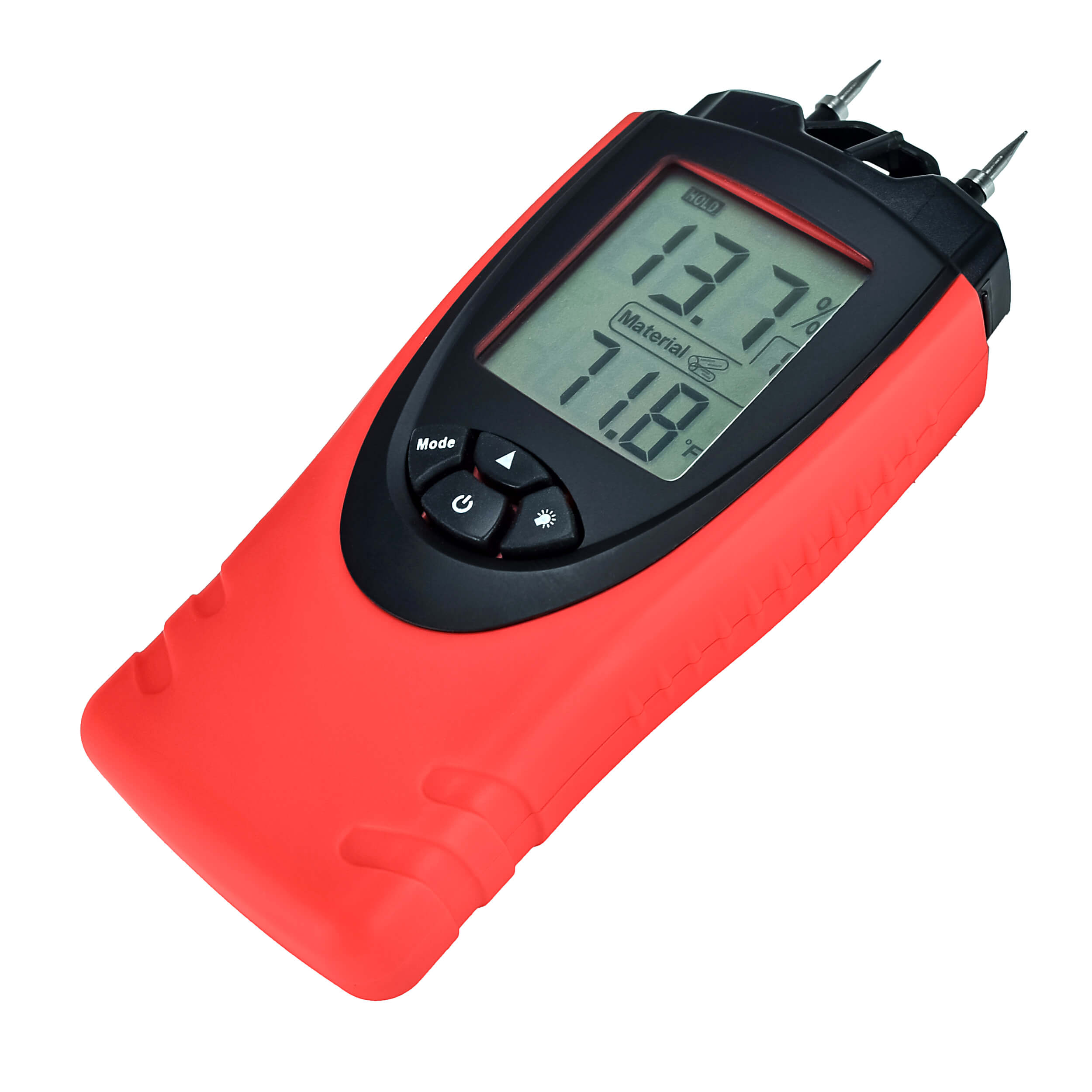Leading 10 Benefits of Using a Moisture Meter for Correct Measurements in Your Home
The Ultimate Guide to Dampness Meters: A Comprehensive Summary and Exactly How They Can Save You Money
In the realm of building maintenance, building and construction, and numerous markets, the relevance of precisely measuring wetness levels can not be overstated. Moisture meters function as essential devices in detecting and keeping an eye on moisture content in products, assisting in protecting against pricey problems and ensuring the top quality of items. Understanding the nuances of various kinds of moisture meters, their applications, and the prospective cost-saving advantages they provide can be a game-changer for professionals and services alike. Finding how these devices can not only enhance processes but likewise add to economic savings is a journey worth starting.
Sorts Of Dampness Meters
Different kinds of moisture meters are offered for various applications in numerous industries. One typical type is the pin-type moisture meter, which measures the electrical resistance between two pins placed right into a product. This type is suitable for timber, drywall, and various other structure products. Pinless moisture meters, on the various other hand, usage electro-magnetic sensor plates to scan a larger area without causing damages to the product's surface area. Moisture Meter. These meters are suitable for promptly assessing wetness degrees in huge locations such as floors and wall surfaces.

Infrared dampness meters gauge the thermal properties of a product to determine its wetness web content non-invasively, making them useful for applications where pin or pinless meters may not be ideal. Recognizing the various types of dampness meters offered can help sectors pick the most proper device for their specific wetness measurement demands.

Advantages of Using Moisture Meters
Moisture meters provide very useful advantages in properly analyzing and checking dampness degrees in diverse materials and environments (Moisture Meter). Among the primary advantages of utilizing moisture meters is the prevention of prospective damages created by excess dampness. By identifying and dealing with high wetness degrees early, moisture meters help to stop mold growth, rot, and structural damage in structures, conserving both money and time on fixings. Furthermore, moisture meters aid in guaranteeing the high quality of products during building or production processes. By properly measuring moisture material, these tools help preserve the honesty of wood, drywall, concrete, and various other products, reducing the danger of failures or problems.
In addition, making use of moisture meters can lead to increased power effectiveness. In farming setups, wetness meters play a vital function in optimizing plant yields by allowing farmers to check soil moisture levels and make notified watering decisions.
How to Choose the Right Wetness Meter
Selecting the proper dampness meter entails taking into consideration key factors such as material compatibility, dimension range, and calibration accuracy. When picking a moisture meter, it's important to make certain that the meter is suitable for the details material you will be screening. Various materials have differing electric residential properties that can impact wetness analyses, so picking a meter made for your product is vital for exact outcomes. In addition, take into consideration the dimension array of the wetness meter. Make certain that the meter can discover dampness levels within the array needed for your applications. Calibration accuracy is another vital variable to remember. Choose a moisture meter with trusted calibration to make sure precise and regular analyses. Some meters may require regular calibration modifications, so understanding the calibration procedure is very important. By thoroughly reviewing these factors, you can select a wetness meter that meets your demands and supplies exact moisture dimensions for your projects.
Proper Techniques for Dampness Meter Use

Price Cost Savings With Moisture Meter Applications
Just how can the calculated application of dampness meters lead to substantial expense financial savings across numerous sectors? In the agriculture sector, moisture meters help in figuring out the optimum time for harvesting crops, preventing over-drying or excess moisture that can affect the last item's click here for more info top quality.
Similarly, in construction, dampness meters assist protect against costly problems by spotting wetness levels in building products, such as wood or concrete, which can lead to architectural problems otherwise resolved immediately. By determining trouble locations beforehand, contractors can take rehabilitative measures to stay clear of extensive repairs or substitutes, inevitably conserving time and cash.
Furthermore, in the food processing market, wetness meters are crucial for monitoring product high quality and making certain compliance with safety guidelines. By accurately determining wetness content in foodstuff, manufacturers can stop wasting, preserve freshness, and minimize waste, resulting in considerable expense financial savings. Overall, the strategic application of dampness meters is a useful investment that can result in considerable expense decreases and enhanced efficiency throughout different markets.
Final Thought
Finally, dampness meters are important devices for detecting and determining wetness degrees in different materials. By making use of the right moisture meter and complying with proper methods, customers can successfully stop costly problems brought on by excess dampness. Investing in a top quality wetness meter can cause considerable expense financial savings over time by determining potential concerns at an early stage and making it possible for timely removal. Ultimately, wetness meters are essential tools for keeping the stability and longevity of products and frameworks.
Moisture meters offer as indispensable tools in detecting and keeping an eye on moisture web content in products, aiding in avoiding pricey problems and making certain the quality of products. Infrared dampness meters measure the thermal homes of a material to identify its great post to read moisture content non-invasively, making them useful for applications where pin or pinless meters may not be appropriate.Dampness meters offer very useful advantages in accurately evaluating and keeping an eye on dampness degrees in diverse products and environments. In farming settings, dampness meters play an essential duty in optimizing plant returns by making it possible for farmers to check dirt moisture levels and make educated irrigation decisions.In conclusion, moisture meters are valuable tools for discovering and determining dampness levels in numerous products.